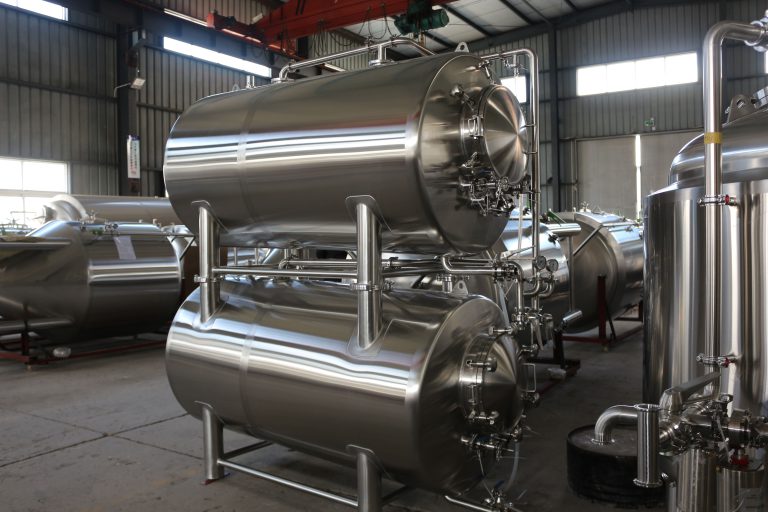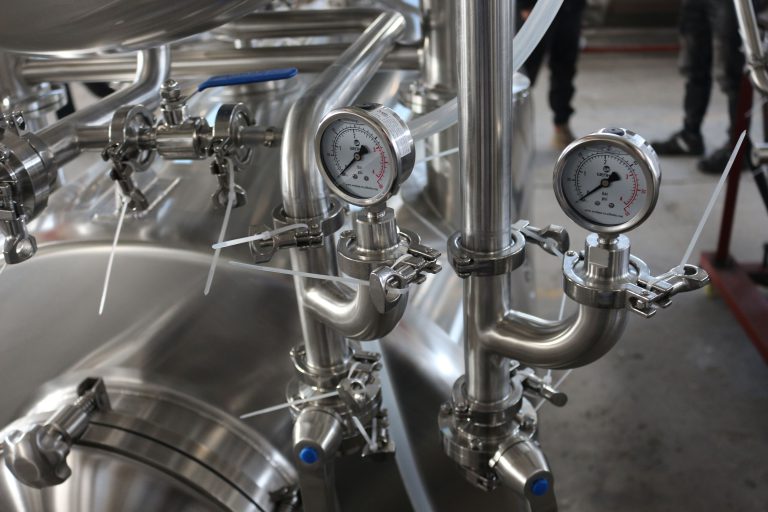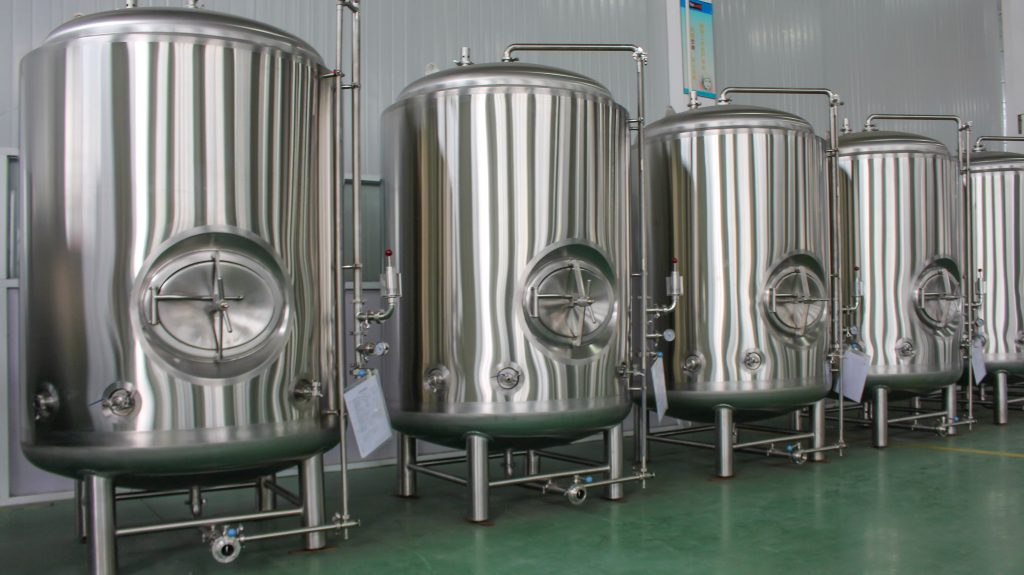Introduction

Craft beer enthusiasts and brewers alike understand that the essence of great beer lies in its production. The brewing process is intricate and demands precision at every step. One crucial component of this process is the brewing vat, also known as a brewing vessel or fermenter. This article delves into why a quality brewing vat is essential for crafting superior craft beer, exploring various aspects such as material choices, design considerations, and maintenance practices. Whether you’re a seasoned brewer or a homebrew hobbyist, understanding the impact of your brewing vat on the final product can elevate your brewing game.
The Role of a Brewing Vat in Craft Beer Production
A brewing vat is central to the beer-making process. It serves multiple functions including heating, fermenting, and conditioning the beer. Its role can be summarized as follows:
- Heating: In the initial stages, the brewing vat is used to heat the wort to specific temperatures, which is crucial for the enzymatic processes that convert starches into fermentable sugars.
- Fermentation: During fermentation, the vat provides an environment where yeast can convert sugars into alcohol and carbon dioxide. The quality of the fermentation process greatly impacts the beer’s flavor, aroma, and mouthfeel.
- Conditioning: After fermentation, the vat continues to play a role in conditioning the beer, allowing it to mature and develop its full flavor profile.
Key Features of a Quality Brewing Vat
To ensure the best possible beer, several key features should be considered when selecting a brewing vat:
Material Composition
The material of the brewing vat affects heat retention, ease of cleaning, and durability. Common materials include:
- Stainless Steel: Preferred for its durability, resistance to corrosion, and ease of sanitation.
- Glass: Used in smaller scales; it allows brewers to monitor fermentation visually but is less durable.
- Plastic: Cost-effective and lightweight but may not be as durable or easy to sanitize.
| Material | Durability | Corrosion Resistance | Sanitation | Cost |
|---|---|---|---|---|
| Stainless Steel | High | Excellent | Easy | Moderate |
| Glass | Low | Poor | Moderate | Low |
| Plastic | Moderate | Fair | Difficult | Low |
Size and Capacity
The size of the brewing vat should match your production needs. Larger vats can handle bigger batches, but they also require more space and resources. Small-scale brewers might prefer smaller vats to manage production and quality more easily.
Temperature Control
Accurate temperature control is crucial for fermentation. Quality brewing vats often come with built-in temperature control systems or the capability to install them. This feature ensures that the yeast remains within its optimal temperature range, preventing off-flavors and inconsistencies.
Ease of Cleaning
Sanitation is vital in brewing to prevent contamination. Vats that are easy to clean and have fewer crevices reduce the risk of bacterial infections and spoilage. Look for vats with smooth interiors and access ports for thorough cleaning.
The Impact of Material Choices on Beer Quality
The choice of material in a brewing vat has a significant impact on the final product. Stainless steel, for example, is a popular choice due to its non-reactive nature, which prevents unwanted flavors from leaching into the beer. On the other hand, plastic can sometimes impart off-flavors, especially if not properly maintained.
Stainless Steel Vats
- Pros: Highly durable, easy to clean, and resistant to corrosion.
- Cons: More expensive than plastic or glass.
Plastic Vats
- Pros: Lightweight and cost-effective.
- Cons: Prone to scratching, which can harbor bacteria; less durable.
Glass Vats
- Pros: Allows visual inspection of the fermentation process.
- Cons: Fragile and less practical for large-scale production.
Design Considerations for Craft Brewing Vats
Beyond material, the design of a brewing vat affects its functionality. Here are key design considerations:
Shape and Size
The shape of the vat can influence the mixing and circulation of the wort and yeast. Conical bottoms, for example, allow for better yeast collection and removal.
Access Points
Vats with multiple access points (such as ports and lids) make it easier to add ingredients, monitor the brewing process, and clean the vessel thoroughly.
Insulation
Proper insulation helps maintain stable temperatures and can be crucial for both heating and cooling. Insulated vats help reduce energy consumption and improve brewing efficiency.
Maintenance and Longevity

Proper maintenance extends the life of a brewing vat and ensures consistent beer quality. Regular cleaning, inspection, and repairs are necessary to prevent issues such as rust, contamination, and structural damage.
Cleaning Procedures
Follow the manufacturer’s guidelines for cleaning and sanitizing your vat. Typically, this involves a combination of hot water, sanitizers, and brushes or pads to remove residues and prevent microbial growth.
Inspection and Repair
Regularly inspect your vat for signs of wear or damage. Address any issues promptly to avoid compromising the quality of your beer.
Conclusion
A quality brewing vat is more than just a vessel; it is a fundamental component that significantly influences the final product. From material choices and design features to maintenance practices, every aspect of the brewing vat impacts the brewing process and, ultimately, the quality of the craft beer. Investing in a high-quality vat and understanding its role in brewing can lead to better beer and a more successful brewing experience. Whether you’re a homebrewer or a professional, the importance of selecting the right brewing vat cannot be overstated.
FAQ
What is the best material for a brewing vat?
Stainless steel is often considered the best material due to its durability, resistance to corrosion, and ease of cleaning. However, the choice may vary based on specific needs and budget.
How do I clean my brewing vat?
Cleaning involves using hot water and appropriate sanitizers. It’s important to follow the manufacturer’s instructions for cleaning to ensure thorough sanitation and avoid contamination.
Can I use a plastic brewing vat for large-scale production?
Plastic vats are more commonly used for small-scale or homebrewing due to their cost-effectiveness and lightweight nature. For large-scale production, stainless steel is generally preferred for its durability and ease of maintenance.
How often should I inspect my brewing vat?
Regular inspections should be part of your maintenance routine. Check for signs of wear or damage and address any issues immediately to maintain the quality of your beer.
Are there any special considerations for temperature control?
Yes, maintaining accurate temperature control is crucial for fermentation. Ensure your vat has a reliable temperature control system or consider installing one to keep the fermentation process stable.

